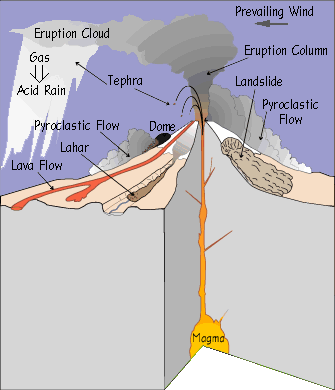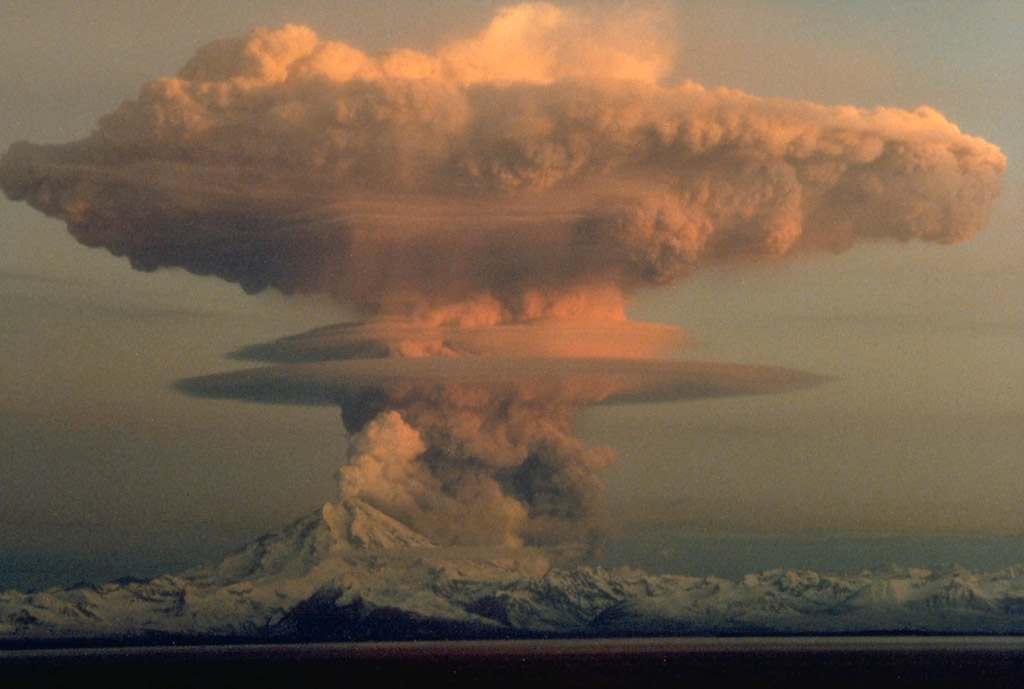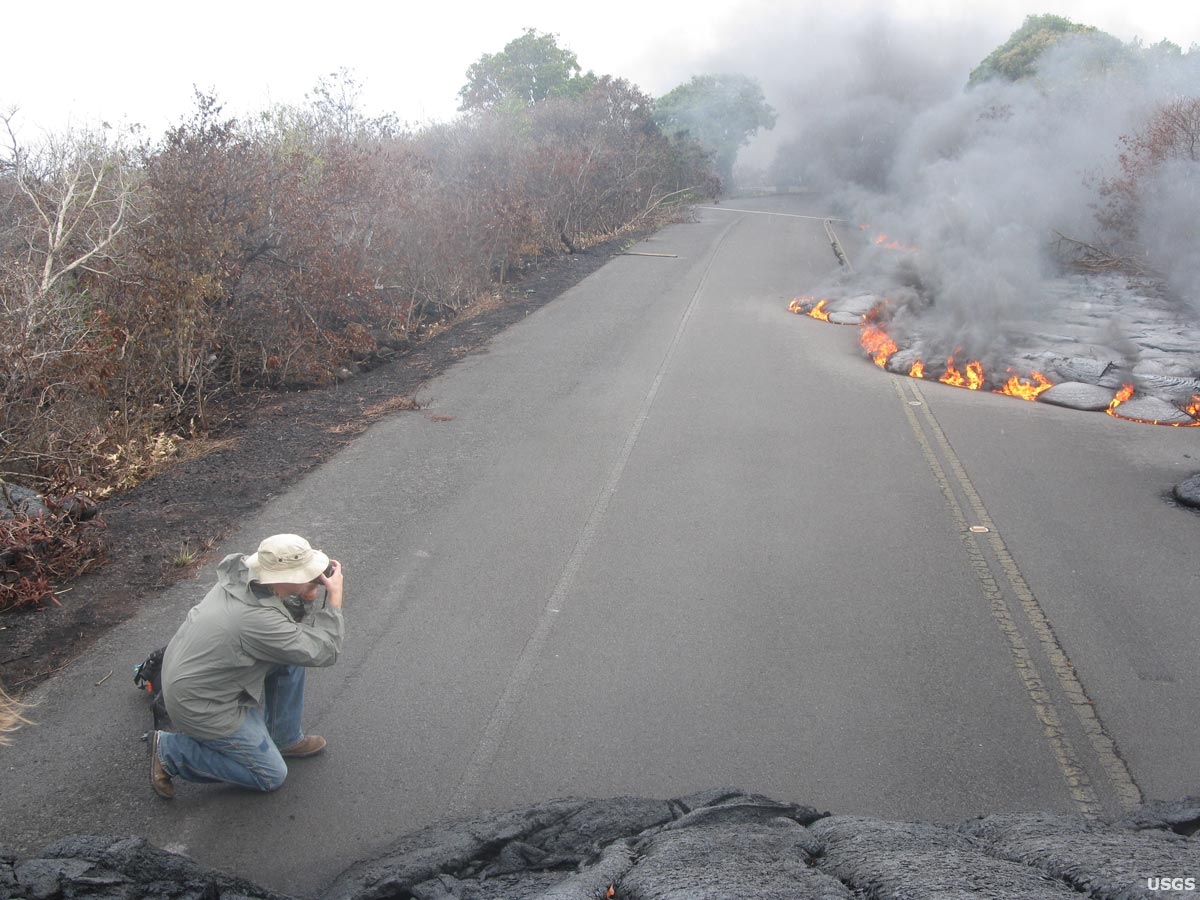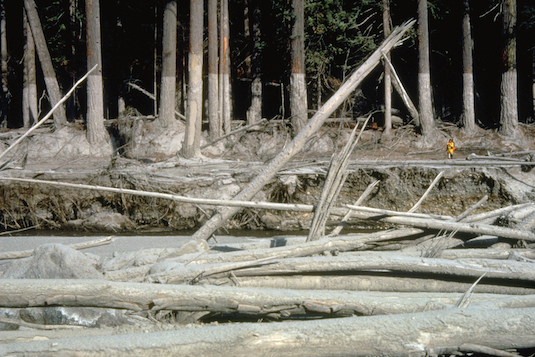Volcanic HazardsVolcanic activity and the landscape that results are both part of a natural and rejuvenating process in which lava flows build new land. Ash becomes the parent material for soil. However, volcanic activity can be a hazard to humans.¬ Figure 16.16 illustrates several volcanic hazards described below.
Hot ash and gas shoot upward as an eruption column from the top of a volcanic cone during an explosive eruption. In extreme cases, an eruption column may penetrate the stratosphere, spreading aerosols and particulates that affect weather. An explosive eruption column may collapse sending hot ash, gas, and fragments of rock rushing down a volcano as a pyroclastic flow. The collapse of a dome may also produce a pyroclastic flow.  Reaching temperatures of 1500 F and speeds of 700 km/h (450 mph, pyroclastic flows are extremely dangerous. Nuée ardente (French for "burning cloud") refers to a glowing red pyroclastic flow. An eruption cloud may drift for hundreds of kilometers downwind of the volcano spreading ash and tephra over a large region.
Lava flows are generally slow enough that people can evacuate before the flows pose a threat to life. Lava flows do however, cause significant property damage. Lava flows block highways and turn structures into cinders (Figure 15.3.5) Diversion barriers have been used with some success to redirect fluid lava flows. Spraying seawater on a flow to cool and solidify it has also been attempted.
Mudflows or debris flows called lahars result when hot pyroclastic material melts snowpacks, or fresh pyroclastic deposits are mobilized by heavy rains. Having the consistency of wet cement, a lahar can rush down mountain slopes or along a river valley at speeds of 22 mph or more. Sadly, nearly 22,000 people lost their lives when a lahar, produced by the melting of a summit glacier, buried the town of Aremero on the slopes of Nevado del Ruiz. Nearly 220 kilometers (135 miles) of river channels surrounding Mt. Saint. Helens were affected by the lahars from the May 18, 1980 (Figure 16.20).
Tiny, jagged particles of volcanic ash are hard and abrasive. Short-term exposure to ash causes irritation of the eyes and respiratory issues, especially for those with diseases like asthma.¬ Heavy ash fall, especially when wet, can collapse buildings.¬ Air travel is rerouted around eruptions to keep ash from being sucked into jet aircraft engines. The April 2010 eruption of Iceland's Eyjafjallaj√∂kull volcano closed the air space in several European countries for over a week as aircraft were rerouted away from the ash cloud. Sulfur dioxide is a common gas expelled from volcanoes and when combines with moisture in air, it produces acid rain or volcanic fog called ďvogĒ. Acid rain destroys vegetation and contaminates water supplies. Vog causes respiratory problems and kills crops.
|



